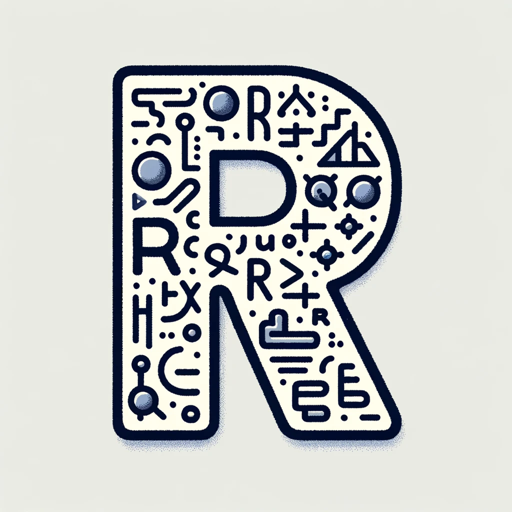How to Measure Anything-estimation tool for complex problems.
AI-powered problem-solving and estimation.
请告诉我在纽约市遇到超级英雄的概率
我想估算一下泰国春节假期的中国游客数量
帮我算算养猫贵还是养狗贵,贵多少?
一摩尔鼹鼠(a mole of moles)有多重?
Related Tools
Load More
Data Analyst
Master Data Analyst GPT: Excel in SQL, Python, R, data visualization (Tableau, Power BI), and data management. Proficient in statistics, ML, AI. Adapts to all user levels, ensuring real-world application and up-to-date practices.

Quantitative Research
Analytical aid for quantitative research and data analysis.

Advanced Data Analysis & Guiderails
Data analysis and guidance expert, based on a Python script.

Bayesian Mentor
Bayesian tutor based on R with scientific examples.

Mr. Probability
Provides probabilities in STEM and societal topics.

方法论专家 Methodology Expert
当用户提出相关问题的时候,辅助用户使用一些方法论进行问题解决。The user is facing practical problems and needs guidance based on methodology to find systematic solutions.
20.0 / 5 (200 votes)
Introduction to How to Measure Anything
How to Measure Anything is designed to help users estimate and measure quantities that may seem impossible or difficult to quantify at first glance. It employs a structured approach to break down large, complex questions into smaller, more manageable problems, often using techniques like Fermi estimation and logical decomposition. The idea is to provide reasonable and actionable estimates even with limited or incomplete data. One well-known example of this is estimating the number of piano tuners in a large city by breaking the problem down into factors such as population size, percentage of households with pianos, and time required for tuning. This approach, popularized by physicist Enrico Fermi, is invaluable in scientific, engineering, and data-driven contexts.

Main Functions of How to Measure Anything
Estimation of Seemingly Unmeasurable Quantities
Example
How many piano tuners are there in Chicago?
Scenario
This function can be applied to estimate the number of piano tuners in Chicago by considering the population, the proportion of households with pianos, and the frequency of tuning. By using logical steps and simple calculations, even without direct data, the estimation can be surprisingly accurate.
Decomposition of Large Problems
Example
What is the weight of all ants on Earth?
Scenario
By breaking down a large question, such as the total weight of ants on Earth, into smaller steps—like estimating the number of ants per square meter and the average weight of an ant—this function allows users to tackle problems that initially seem insurmountable.
Application of Probabilistic Thinking
Example
How likely is a new product launch to succeed?
Scenario
In business contexts, users can estimate success probabilities by considering factors such as market demand, competition, and prior product performance. By combining probabilistic reasoning with available data, they can make more informed decisions.
Ideal Users of How to Measure Anything
Data Analysts and Scientists
These users benefit from the structured approach of How to Measure Anything when faced with incomplete data or complex problems. Estimation techniques and logical decomposition are particularly useful in research, where direct measurements or precise data are often unavailable.
Business Strategists and Decision-Makers
For business professionals who must make decisions based on uncertain or limited data, this method allows them to estimate market sizes, potential returns on investment, and risk factors. It helps in making more informed decisions in areas such as product development and market entry.

How to Use 'How to Measure Anything'
Visit aichatonline.org for a free trial without login, also no need for ChatGPT Plus.
The first step to using 'How to Measure Anything' is to visit the website where you can try it without requiring any sign-up or additional subscription services.
Familiarize Yourself with Estimation Techniques
The tool uses estimation frameworks inspired by methods like the Fermi problem, so understanding the basic logic behind decomposing large problems into manageable parts is essential.
Identify the Problem
Determine the issue or value you want to estimate, then break it down into smaller, estimable components using logic, known data, or reasonable assumptions.
Perform Multiple Decompositions
Try different ways to break the problem down. The tool encourages testing at least three paths to reach the answer. Compare these methods to check the consistency of results.
Verify and Adjust
After calculating estimates, review your assumptions and use the tool to search or refine steps that seem less certain. Adjust based on real-world data for higher accuracy.
Try other advanced and practical GPTs
Predactor : Le rédacteur Bons Plans
Boost Your Sales with AI Copy

R Code Helper
AI-Powered R Programming Assistance

AIメールアシスタント
AI-Powered Email Drafting Tool

私域文案模仿器
AI-powered style and text analysis tool

Simon阿文
Empowering creators with AI-driven design tools

The Ill-Made Saintess: Domrémy 1425
Experience history through AI-powered storytelling.

BotMused
AI-Powered Branding and Storytelling.

NANDAIX
AI-Powered Content Creation for All.

Data Scientist and Analyst Assistant
AI-powered data insights and security

AI Data Scientist
AI-powered solutions for corporate finance

英语学习GPT (English Learning GPT)
AI-powered English learning assistance.

你的情感导师----小荣
AI-powered emotional guidance for healthy relationships.

- Data Analysis
- Problem Solving
- Decision Making
- Cost Estimation
- Scientific Inquiry
Frequently Asked Questions about 'How to Measure Anything'
What is 'How to Measure Anything'?
'How to Measure Anything' is an estimation tool that helps users solve complex problems by breaking them down into smaller, calculable components. It is based on techniques like the Fermi method and is useful for making rough, yet reasonable, approximations in a variety of fields.
What kind of problems can this tool solve?
This tool can estimate answers to a wide range of problems, from predicting the number of users for a new product to calculating the carbon footprint of an organization. It is flexible and can be used in business, science, and everyday scenarios.
Do I need specific expertise to use 'How to Measure Anything'?
No, the tool is designed for both experts and non-experts. While having some understanding of logic and estimation techniques helps, the tool guides you through the process step-by-step.
Can the tool verify my estimates?
Yes, the tool has built-in search functionality to cross-check your assumptions or fill in missing data. This makes it easier to refine your estimates and improve their accuracy.
What are the benefits of using this tool?
It allows you to make informed guesses in situations where data might be incomplete or inaccessible. You can analyze business metrics, perform cost-benefit analyses, or even solve theoretical questions with confidence.